Single-Cell Transcriptomics Reveals the Complexity of the Tumor Microenvironment of Treatment-Naive Osteosarcoma
- PMID: 34367994
- PMCID: PMC8335545
- DOI: 10.3389/fonc.2021.709210
Single-Cell Transcriptomics Reveals the Complexity of the Tumor Microenvironment of Treatment-Naive Osteosarcoma
Erratum in
-
Corrigendum: Single-cell transcriptomics reveals the complexity of the tumor microenvironment of treatment-naive osteosarcoma.Front Oncol. 2022 Nov 15;12:1077067. doi: 10.3389/fonc.2022.1077067. eCollection 2022. Front Oncol. 2022. PMID: 36457508 Free PMC article.
Abstract
Osteosarcoma (OS), which occurs most commonly in adolescents, is associated with a high degree of malignancy and poor prognosis. In order to develop an accurate treatment for OS, a deeper understanding of its complex tumor microenvironment (TME) is required. In the present study, tissues were isolated from six patients with OS, and then subjected to single-cell RNA sequencing (scRNA-seq) using a 10× Genomics platform. Multiplex immunofluorescence staining was subsequently used to validate the subsets identified by scRNA-seq. ScRNA-seq of six patients with OS was performed prior to neoadjuvant chemotherapy, and data were obtained on 29,278 cells. A total of nine major cell types were identified, and the single-cell transcriptional map of OS was subsequently revealed. Identified osteoblastic OS cells were divided into five subsets, and the subsets of those osteoblastic OS cells with significant prognostic correlation were determined using a deconvolution algorithm. Thereby, different transcription patterns in the cellular subtypes of osteoblastic OS cells were reported, and key transcription factors associated with survival prognosis were identified. Furthermore, the regulation of osteolysis by osteoblastic OS cells via receptor activator of nuclear factor kappa-B ligand was revealed. Furthermore, the role of osteoblastic OS cells in regulating angiogenesis through vascular endothelial growth factor-A was revealed. C3_TXNIP+ macrophages and C5_IFIT1+ macrophages were found to regulate regulatory T cells and participate in CD8+ T cell exhaustion, illustrating the possibility of immunotherapy that could target CD8+ T cells and macrophages. Our findings here show that the role of C1_osteoblastic OS cells in OS is to promote osteolysis and angiogenesis, and this is associated with survival prognosis. In addition, T cell depletion is an important feature of OS. More importantly, the present study provided a valuable resource for the in-depth study of the heterogeneity of the OS TME.
Keywords: heterogeneity; naive osteosarcoma; osteolysis; single-cell RNA sequencing; tumor microenvironment.
Copyright © 2021 Liu, Feng, Dai, Bao, Yuan, He, Qin, Liao, He, Huang, Yu, Zeng, Guo, Huang, Yang, Jiang, Liao, Xiao, Zhan, Lin, Xu, Ye, Ma, Wei and Mo.
Conflict of interest statement
The authors declare that the research was conducted in the absence of any commercial or financial relationships that could be construed as a potential conflict of interest.
Figures

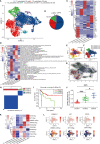
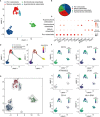




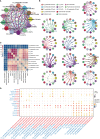
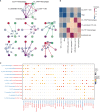
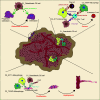
Similar articles
-
Deciphering the heterogeneity and immunosuppressive function of regulatory T cells in osteosarcoma using single-cell RNA transcriptome.Comput Biol Med. 2023 Oct;165:107417. doi: 10.1016/j.compbiomed.2023.107417. Epub 2023 Sep 1. Comput Biol Med. 2023. PMID: 37669584
-
Combining bulk RNA-sequencing and single-cell RNA-sequencing data to reveal the immune microenvironment and metabolic pattern of osteosarcoma.Front Genet. 2022 Oct 19;13:976990. doi: 10.3389/fgene.2022.976990. eCollection 2022. Front Genet. 2022. PMID: 36338972 Free PMC article.
-
Single-cell RNA sequencing reveals the cellular and molecular heterogeneity of treatment-naïve primary osteosarcoma in dogs.Res Sq [Preprint]. 2023 Aug 9:rs.3.rs-3232360. doi: 10.21203/rs.3.rs-3232360/v1. Res Sq. 2023. Update in: Commun Biol. 2024 Apr 24;7(1):496. doi: 10.1038/s42003-024-06182-w. PMID: 37609233 Free PMC article. Updated. Preprint.
-
Single-cell RNA-seq reveals intratumoral heterogeneity in osteosarcoma patients: A review.J Bone Oncol. 2023 Mar 20;39:100475. doi: 10.1016/j.jbo.2023.100475. eCollection 2023 Apr. J Bone Oncol. 2023. PMID: 37034356 Free PMC article. Review.
-
Single-cell RNA sequencing in breast cancer: Understanding tumor heterogeneity and paving roads to individualized therapy.Cancer Commun (Lond). 2020 Aug;40(8):329-344. doi: 10.1002/cac2.12078. Epub 2020 Jul 12. Cancer Commun (Lond). 2020. PMID: 32654419 Free PMC article. Review.
Cited by
-
ATG16L1 is a Potential Prognostic Biomarker and Immune Signature for Osteosarcoma: A Study Based on Bulk RNA and Single-Cell RNA-Sequencing.Int J Gen Med. 2022 Feb 2;15:1033-1045. doi: 10.2147/IJGM.S341879. eCollection 2022. Int J Gen Med. 2022. PMID: 35140506 Free PMC article.
-
The Role of NR4A1 in the Pathophysiology of Osteosarcoma: A Comprehensive Bioinformatics Analysis of the Single-Cell RNA Sequencing Dataset.Front Oncol. 2022 Jul 28;12:879288. doi: 10.3389/fonc.2022.879288. eCollection 2022. Front Oncol. 2022. PMID: 35965537 Free PMC article.
-
Longitudinal characterization of primary osteosarcoma and derived subcutaneous and orthotopic relapsed patient-derived xenograft models.Front Oncol. 2023 Jun 12;13:1166063. doi: 10.3389/fonc.2023.1166063. eCollection 2023. Front Oncol. 2023. PMID: 37377921 Free PMC article.
-
Single-Cell Spatial-Temporal Analysis of ZNF451 in Mediating Drug Resistance and CD8+ T Cell Dysfunction.Research (Wash D C). 2024 Nov 12;7:0530. doi: 10.34133/research.0530. eCollection 2024. Research (Wash D C). 2024. PMID: 39534688 Free PMC article.
-
Development of a prognostic model for osteosarcoma based on macrophage polarization-related genes using machine learning: implications for personalized therapy.Clin Exp Med. 2025 May 9;25(1):146. doi: 10.1007/s10238-024-01530-w. Clin Exp Med. 2025. PMID: 40343502 Free PMC article.
References
LinkOut - more resources
Full Text Sources
Molecular Biology Databases
Research Materials
Miscellaneous

